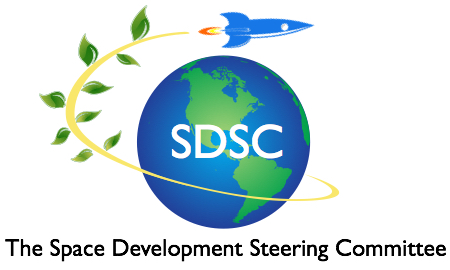An impressive team of government and industry mavericks has responded to the Secretary of Defense Ashton Carter’s Innovation Challenge for the Defense, Diplomacy, and Development (D3) Innovation Summit in December with a bold idea for “Carbon-Free Energy for Global Resilience and International Goodwill.” The carbon-free energy source the team proposes is solar power harvested in space and transmitted to earth, an energy source that in the long run could replace all fossil fuels and is an energy source we’ve been tapping since 1961. The space solar power team’s aim is to “empower global prosperity and security through a three step program leading to an ambitious international on-orbit demo of an orbital space-solar-power-harvesting station within 10 years.”
This space solar power idea has been selected for the semi-finals from a pool of over 500 ideas for presentation to senior leaders from the Department of Defense, the US Agency for International Development, and the US Department of State. It will be presented at the first ever D3 summit in December.
The space solar power team is made up of heavyweights. It includes members from the Department of State Bureau of Energy Implementation, the Defense Advanced Projects Agency (DARPA), the Joint Staff Logistics Directorate, and the Air Force’s Air University Center for Space Innovation. The team also includes industry stakeholders Mankins Space Technology Inc. and Northrop Grumman. Among the submitters is the former head of NASA’s Advanced Concepts, the former Chief of Future Technology from HQ Air Force Strategic Planning, a senior DARPA program manager, a current director of Systems Development and Technology Strategy of a major aerospace company, and a space robotics engineer at one of America’s premier space technology laboratories.
The teams seeks to re-assert US leadership in space, energy and other technologies, to amplify the US leadership in the fight against climate change, to create five million US jobs, to position the US as a clean energy exporter, and to rekindle America’s spirit to do great things.
The team aims to put Space Solar Power on the national and global agenda. Space Solar Power is a new global utility and America could be at the center of it. An analogy is GPS, which today annually contributes $56 billion or nearly 0.3% of America’s GDP. Why? Because America is the leader in GPS. In the same way, the new Space Solar Power team aims to make America the first nation to implement a large-scale space solar power program.
A success in space solar power would be far more significant than GPS. It would bring a green energy revolution, a revolution sparked by America and its partners. It would bring clean power to the developing world. It would grow the global GDP ten-fold, servicing a $21 trillion dollar annual energy market. And it would create as many as five million jobs.
At the moment, America is a late-comer to the game. And the Chinese are in the lead. The Chinese Academy of Space Technology (CAST) has had a multi-million dollar space solar power program for years now, a program complete with a roadmap to space solar power commercialization. The Chinese Academy of Space Technology’s Professor Wang Xiji says about China’s space solar power program, “China had built up a solid industrial foundation, acquired sufficient technology and had enough money to carry out the most ambitious space project in history. Once completed, the solar station, with a capacity of 100MW [megawatts], would span at least one square kilometer, dwarfing the International Space Station and becoming the biggest man-made object in space…Whoever takes the lead in the development and utilization of clean and renewable energy and the space and aviation industry will be the world leader.” Added Xiji, if China, “did not act quickly, China would let other countries, in particular the US and Japan, take the lead and occupy strategically important locations in space.”
Occupying that strategically important location in space–and in the global economy–is precisely what the space solar power team urges. But right now, China sees space solar power as the key to global leadership and America does not.
As The Chinese Academy of Space Technology explains, “In its long-term vision, the responsibility for ensuring China’s food safety for its huge population, meeting its international obligations for environmental protection and providing the structure for its energy needs have determined that the direction of future development of low-carbon energy sources cannot be to sacrifice the ‘inner’ earth. Thus, the state has decided that power coming from outside of the earth, such as solar power and development of other space energy resources, is to be China’s future direction…Since SPS development will be a huge project, it will be considered the equivalent of an Apollo program for energy. In the last century, America’s leading position in science and technology worldwide was inextricably linked with technological advances associated with implementation of the Apollo program. Likewise, as China’s current achievements in aerospace technology are built upon with its successive generations of satellite projects in space, China will use its capabilities in space science to assure sustainable development of energy from space.”
Who will own the next century…it is up to our D3 leaders, Congress, and the US Presidential Candidates to decide. And the D3 space solar power team agrees with the Chinese–the nation that harvests solar power in space will lead.
The semi-finalists present this week. We applaud their leadership and hope the team succeeds in putting SBSP on the national agenda.
[GPS economic data from: http://gpsworld.com/the-economic-benefits-of-gps/ ]
[Xiji quotes from: http://billionyearplan.blogspot.com/2011/09/china-space-agency-looks-to-capture.html ]
